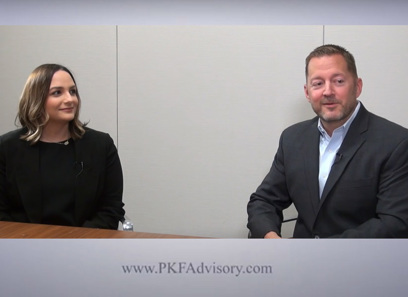The Impact of Economic Factors on the M&A Outlook: What You Need to Know for 2025
The Impact of Economic Factors on the M&A Outlook: What You Need to Know for 2025
Blog Article
Recognizing the Fundamentals of Mergers and Acquisitions for Organization Growth
Mergers and purchases (M&A) stand for critical calculated choices for companies seeking to enhance their competitive positioning and drive growth. Recognizing the subtleties of different merging types-- straight, vertical, and conglomerate-- serves as a structure for aligning and recognizing prospective synergies with business purposes. However, the course to successful M&A is fraught with challenges that call for careful preparation and execution. As organizations browse this complicated landscape, the intricacies of the M&A procedure and the crucial players included come to be crucial to achieving wanted end results. What elements eventually figure out success or failure in these transformative endeavors?
Definition of Mergers and Acquisitions
Mergers and acquisitions (M&A) represent tactical purchases where companies combine their operations to boost development, market share, or competitive benefit. A merger commonly entails 2 business coming with each other to create a brand-new entity, frequently with a shared vision and mutual benefits. On the other hand, a procurement happens when one company purchases one more, thinking control and integrating its procedures right into the buyer's framework.
These deals are driven by numerous motivations, including the wish to achieve economic situations of scale, expand item offerings, go into new markets, or acquire cutting-edge innovations. M&A task is a critical facet of company technique, making it possible for companies to adapt to changing market problems and respond efficiently to competitive stress.
In addition, successful M&A deals require comprehensive due diligence, mindful settlement, and reliable combination preparing to recognize the expected harmonies. The intricacy of these deals highlights the value of legal, financial, and functional considerations, along with the requirement for placement in between the business cultures of the combining entities - M&A. Inevitably, M&An acts as a powerful tool for business looking for to place themselves for sustainable development and increased earnings in an ever-evolving organization landscape
Kinds Of Mergers and Acquisitions
While the landscape of purchases and mergings incorporates a range of strategies, they can mostly be classified right into several distinctive kinds based upon their nature and objectives. The most common types consist of horizontal, vertical, corporation, and market-extension mergers.
Straight mergings happen in between business running in the same sector and at the very same phase of manufacturing. This kind aims to settle market share and minimize competition. Vertical mergings, on the various other hand, entail business at different stages of the supply chain, enabling improved efficiency and control over manufacturing processes.
Empire mergings involve companies from unconnected markets, aimed at diversifying line of product or entering brand-new markets, consequently lowering danger exposure. Market-extension mergers occur between firms in different geographical markets but within the same market, enabling them to broaden their customer base and boost market reach.
Each kind of merger or acquisition offers distinct tactical functions and can substantially affect the resulting organization's functional characteristics, market placement, and growth trajectory. Comprehending these classifications is crucial for companies considering M&A as a path for development and competitive benefit.
Principal in M&A

Investment lenders play a vital function, serving as middlemans who promote settlements and supply appraisal understandings. Their know-how assists both parties navigate complex monetary landscapes, making sure reasonable and fair terms. Lawful consultants are also necessary, as they ensure conformity with governing structures and take care of danger by composing and examining agreements.
In addition, monetary analysts examine the economic health and wellness of both entities, recognizing synergies and forecasting post-merger performance. Corporate advancement groups within business are in charge of identifying possible targets and strategizing on purchase strategies.
M&A Process Summary
The process of mergers and acquisitions (M&A) commonly entails several distinctive stages that need careful Mergers and Acquisitions preparation and implementation. The process begins with strategic planning, where firms recognize their goals and goals for the M&A, such as market growth or diversity. This is adhered to by target identification, throughout which prospective procurement targets or merging companions are looked into and analyzed for compatibility.
As soon as appropriate candidates are recognized, the due persistance phase starts. This important action entails a thorough examination of the target business's financials, procedures, and lawful standing to recognize any kind of potential dangers. After due persistance, the arrangement stage takes area, where the terms of the offer, consisting of cost and framework, are gone over and agreed upon.
The assimilation phase takes place, where the companies work to integrate their systems, societies, and procedures properly. Successful assimilation is necessary for understanding the anticipated synergies and benefits from the M&A.
Benefits and Difficulties of M&A
Recognizing the capacity for development and boosted market share, business usually seek purchases and mergings (M&A) to utilize on calculated benefits. The primary advantages of M&A consist of boosted functional performance, increased item offerings, and accessibility to brand-new markets.
Nevertheless, the obstacles related to M&A are substantial. Social assimilation postures a significant hurdle, as varying corporate cultures can cause staff member discontentment and turnover. Additionally, the monetary effects can be discouraging; the costs of the purchase procedure, including lawful fees and due persistance, can be considerable. Misaligned assumptions relating to synergies can also lead to frustration, as expected advantages might fall short to materialize (M&A).
In addition, regulative scrutiny can make complex the M&A landscape, needing firms to navigate intricate lawful requirements. In recap, while M&A can be a powerful tool for development, firms should weigh the prospective advantages against the fundamental obstacles to guarantee successful combination and long-term value production.
Final Thought

Mergers and procurements (M&A) stand for calculated transactions where companies consolidate their procedures to improve development, market share, or competitive benefit - M&A. Eventually, M&A serves as a powerful tool for business looking for to position themselves for lasting growth and increased productivity in an ever-evolving service landscape
At the center are the acquirers and target business, whose strategic goals drive the motivation for M&A. The procedure begins with tactical planning, where companies recognize their goals and objectives for the M&A, such as market development or diversity.Acknowledging the possibility for development and raised market share, companies typically pursue mergings and acquisitions (M&A) to capitalize on calculated advantages.
Report this page